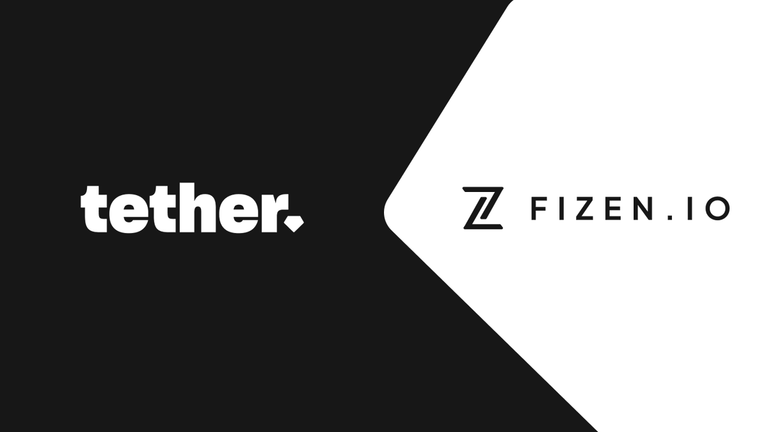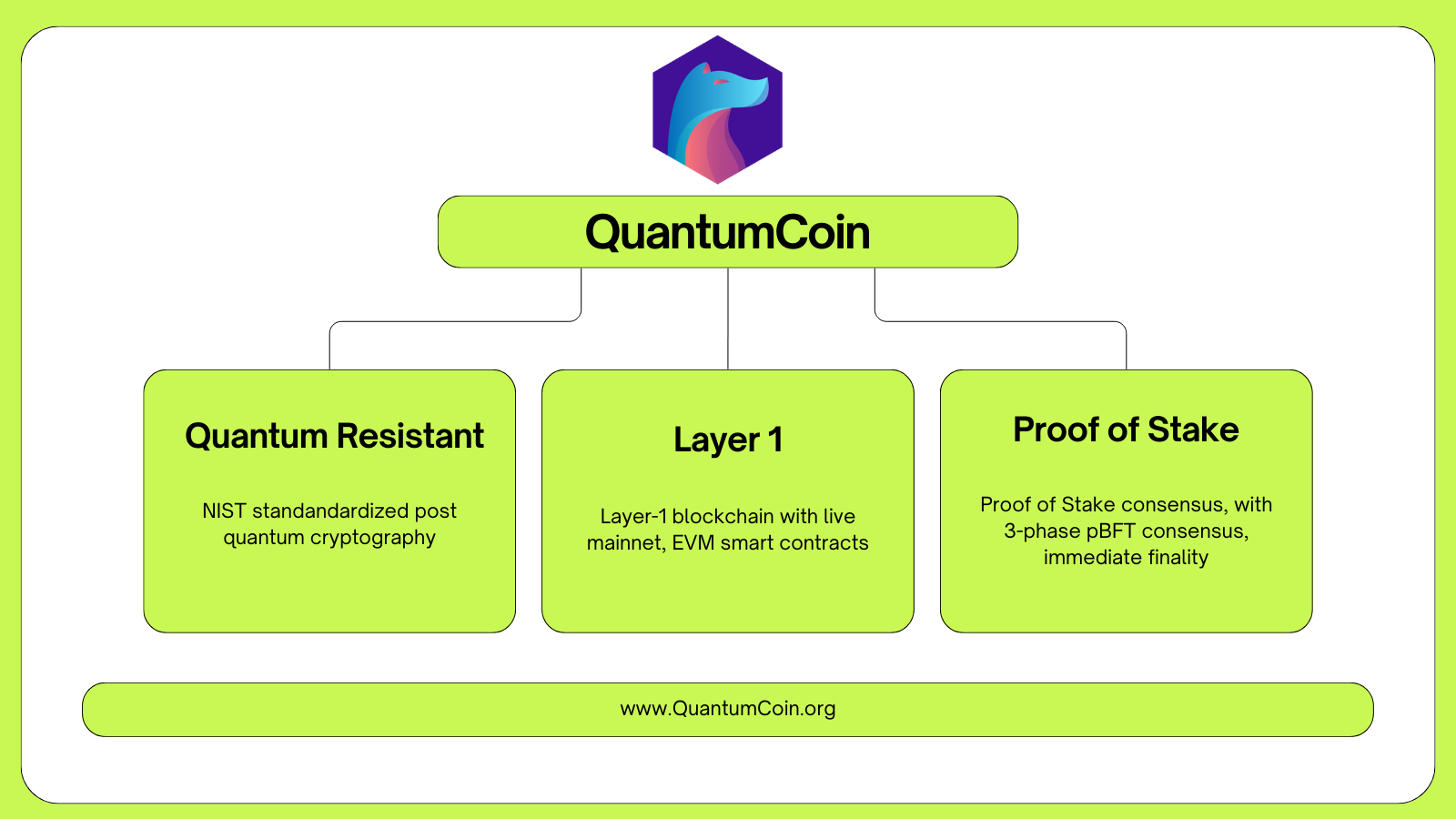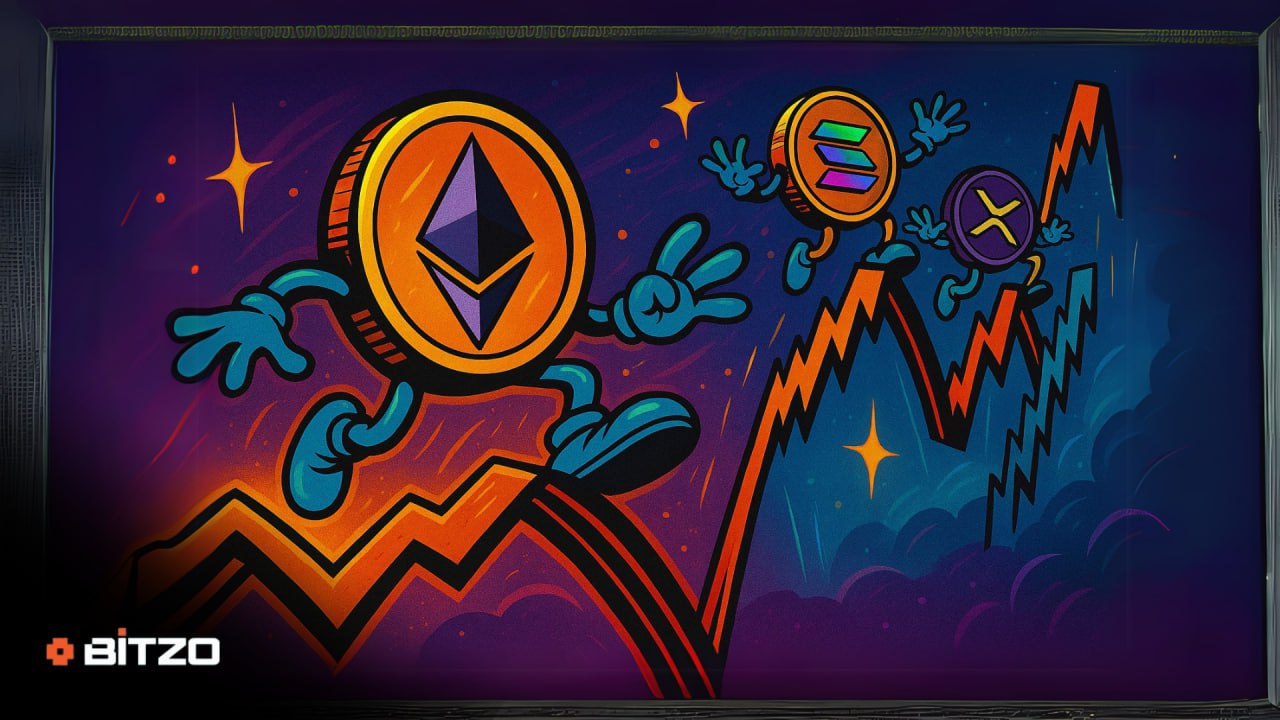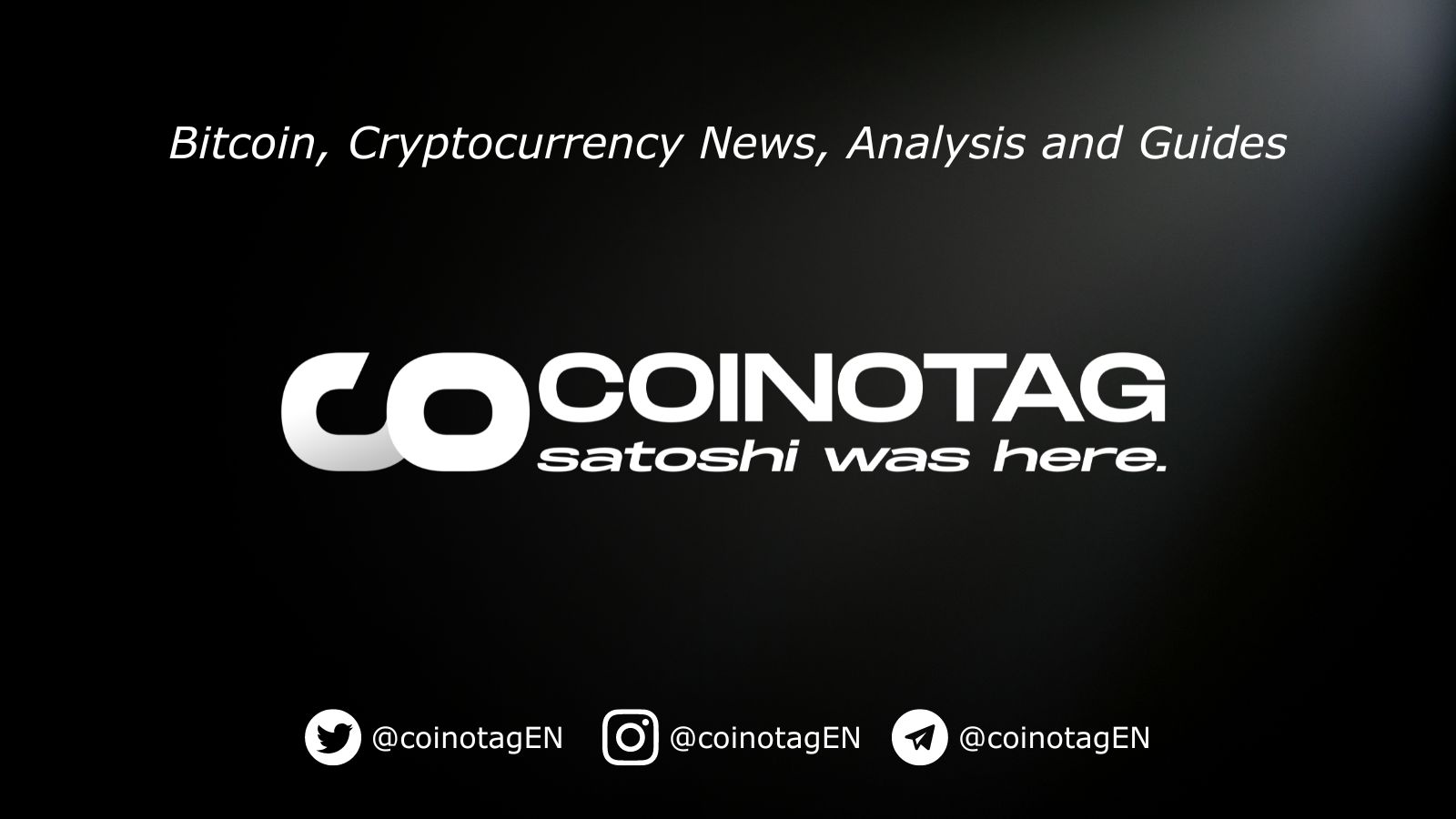
Richard Teng outlines critical success factors in the cryptocurrency market. Market dynamics influence strategic decisions for institutions in digital currencies. Continue Reading: Richard Teng Shares Key Insights on Cryptocurrency and Market Dynamics The post Richard Teng Shares Key Insights on Cryptocurrency and Market Dynamics appeared first on COINTURK NEWS .
CoinTurk News
You can visit the page to read the article.
Source: CoinTurk News
Disclaimer: The opinion expressed here is not investment advice – it is provided for informational purposes only. It does not necessarily reflect the opinion of BitMaden. Every investment and all trading involves risk, so you should always perform your own research prior to making decisions. We do not recommend investing money you cannot afford to lose.
Tether Invests in Fizen to Enhance Global Stablecoin Adoption and Self-Custody Solutions

Tether Holdings SA has announced a strategic investment in fintech firm Fizen Limited, aimed at enhancing global stablecoin adoption and self-custody solutions. This investment is part of Tether`s broader strategy to strengthen the utilization of stablecoins in digital payments. Fizen specializes in self-custodial wallets and allows users to make payments using stablecoins while enabling merchants to receive fiat currency without requiring additional infrastructure. The partnership is expected to facilitate multi-chain stablecoin transactions, thereby improving financial access for users. This is an AI-generated article powered by DeepNewz, curated by The Defiant. For more information, including article sources, visit DeepNewz . To continue reading this as well as other DeFi and Web3 news, visit us at thedefiant.io CoinTurk News

Quantum Resilience in Blockchain: The Dawn of a New Era
In an era when the rapid advancement of quantum computing is poised to reshape the digital landscape, the security of blockchains, the underpinning technology of cryptocurrencies and decentralized systems, is coming under intense scrutiny. Researchers and technologists warn that quantum computers equipped with sophisticated algorithms like Shor’s algorithm could render today’s cryptographic methods obsolete. This article delves into the technical challenges, potential risks, and groundbreaking countermeasures designed to usher in a quantum-resistant era for blockchain technologies. I. The Quantum Computing Threat Landscape A. The Promise and Peril of Quantum Computing Quantum computing is heralded for its potential to solve complex problems that are intractable for classical computers. Harnessing the principles of quantum mechanics, these machines operate using quantum bits or qubits, which can exist in a state of superposition, allowing them to process vast amounts of data simultaneously. Yet, this same capability poses unprecedented risks to current cryptographic frameworks. 1. Shor’s Algorithm and Its Implications At the forefront of these risks is Shor’s algorithm, a quantum algorithm capable of factoring large integers exponentially faster than the best-known classical algorithms. Since many modern cryptographic schemes, most notably, the Elliptic Curve Digital Signature Algorithm (ECDSA), rely on the difficulty of factoring large numbers, the emergence of quantum computing could, in theory, expose vulnerabilities in blockchain protocols. Should quantum computers of sufficient power become operational, the bedrock of blockchain security could be compromised in a matter of hours, if not minutes. “The quantum threat is not a distant possibility; it is a ticking clock that demands immediate attention”. B. The Fallout: Wallet Security Under Siege 1. ECDSA and the Vulnerability of Digital Wallets Digital wallets, which manage the private keys necessary for secure blockchain transactions, predominantly use ECDSA. In a post-quantum era, adversaries armed with quantum computers could potentially reverse-engineer these keys, breaching wallets and accessing cryptocurrencies. This vulnerability is not just theoretical; security experts foresee a future where legacy systems could be rendered impotent in the face of quantum attacks. 2. Real-World Risk Scenarios In scenarios where state-sponsored actors or cybercriminal organizations harness quantum computing power, the implications could be catastrophic. Beyond individual losses, entire financial ecosystems built on blockchain technologies might collapse, leading to a crisis of trust in digital financial systems. As part of its due diligence, blockchain and security experts worldwide have been calling for new quantum resistant measures in blockchains. II. Quantum-Resistant Countermeasures: The Case for a New Paradigm A. The Search for Post-Quantum Cryptography In response to these emerging risks, the global cryptographic community has been proactively developing post-quantum cryptographic algorithms. These new algorithms are designed to withstand attacks from quantum computers while providing robust security for digital communications and transactions. 1. Overview of Leading Algorithms Kyber : A lattice-based key encapsulation mechanism designed to secure data exchanges even in the presence of quantum adversaries. Kyber’s strength lies in its resistance to attacks that would dismantle conventional cryptographic approaches. Dilithium : A state-of-the-art digital signature scheme, which relies on lattice-based cryptography, ensuring the authenticity of transactions in a post-quantum world. SPHINCS+ : A hash-based signature algorithm that is both stateless and robust, providing high levels of security against quantum computational methods. B. Enter QuantumCoin: A Pioneer in Hybrid Quantum-Resistant Blockchain Technologies Against the backdrop of these innovations, QuantumCoin ( QuantumCoin.org ) has captured attention, with its Layer-1 quantum resistant blockchain. With its mainnet now live, QuantumCoin is positioning itself as the first blockchain platform fully integrated with quantum-resistant security measures. 1. The QuantumCoin Proposition QuantumCoin sets itself apart from traditional blockchains by embedding quantum-resilient protocols at its core. The platform’s architecture leverages Kyber for encrypting communication traffic across its decentralized network. This ensures that data transmitted between nodes remains confidential and impervious to decryption attempts made by quantum computers. “With quantum threats looming, adopting protocols like Kyber isn’t just innovative, it’s essential” 2. Fortified Account Protection: Dilithium and SPHINCS+ in Action Beyond encrypting data streams, QuantumCoin employs a dual-layered authentication strategy for user accounts. By integrating both Dilithium and SPHINCS+ for break-glass:: Dilithium ensures that digital signatures, critical for verifying the integrity of transactions, remain unforgeable. SPHINCS+ offers an additional layer of trust by providing an entirely independent mechanism for account verification, thereby mitigating risks even if one algorithm were somehow compromised. Since SPHINCS+ signatures are large, they are used as a break-glass and for signing state-proof every 4096 blocks. These cryptography schemes are used in hybrid with classical ed25519 digital signature algorithm, as a hedge if new quantum algorithms were to be broken in the near term. QuantumCoin is the only blockchain that uses hybrid post quantum cryptography. This two-pronged approach not only diversifies the protective mechanisms but also increases the overall resilience of the blockchain against multifaceted quantum attacks. III. The QuantumCoin Mainnet: Launch and Implications A. An Overview of the Mainnet Rollout The QuantumCoin mainnet launch in December 2023, marked a significant milestone in the evolution of blockchain technology. 1. Technical Features Key highlights of the QuantumCoin mainnet include: Seamless Integration of Post-Quantum Algorithms : From Kyber-based key establishment, to the hybrid Dilithium, ed25519 and SPHINCS+ as a break-glass and for state-proofs, the platform represents a comprehensive overhaul of traditional blockchain security. Interoperability with Existing Systems : Despite its advanced design, QuantumCoin’s mainnet has been built to interoperate with legacy systems, ensuring that users do not face abrupt disruptions during the transition period. For example, QuantumCoin supports smart contracts that can be written in Solidity. Scalability and Performance : Early tests suggest that QuantumCoin maintains competitive transaction speeds and network efficiencies, even with the added complexity of post-quantum cryptographic operations and signature sizes, albeit some tradeoffs on additional disk space and bandwidth usage to account for larger signature sizes. “QuantumCoin demonstrates that it is possible to build a quantum resistant blockchain network without sacrificing performance or usability”. Proof of Stake consensus that is energy efficient and provides immediate finality. Further, validators can run a node and mine QuantumCoins. IV. Broader Impacts on the Blockchain Ecosystem A. A Paradigm Shift in Blockchain Security The implications of QuantumCoin’s innovations extend far beyond its own network. The adoption of quantum-resistant measures is likely to force a broader re-evaluation of blockchain security protocols across the industry. As blockchain remains a cornerstone of the emerging Web3 era, ensuring its longevity and resilience is of paramount importance. 1. Legacy Systems vs. Quantum-Resistant Networks Legacy blockchain systems, which are vulnerable to quantum attacks, may face urgent demands to upgrade their security infrastructure. Financial institutions and users alike will need to weigh the benefits of transitioning to quantum-resistant platforms against the complexities inherent in such migrations. 2. Regulatory and Compliance Considerations As regulators worldwide grapple with the multifaceted challenges posed by both blockchain technology and quantum computing, frameworks and guidelines will need to be updated. QuantumCoin’s early adoption of post-quantum cryptography methods could serve as a benchmark for future regulatory policies, emphasizing the need for robust, forward-thinking security measures. B. Economic and Social Implications The shift towards quantum-resilient blockchains like QuantumCoin is not just a technical upgrade; it represents a fundamental change in the trust infrastructure of digital economies. Stakeholders ranging from individual investors to multinational corporations stand to benefit from enhanced security measures. Conversely, the inertia inherent in legacy systems could precipitate a disruptive market realignment, affecting everything from consumer trust to international financial stability. “The transition to quantum-resistant blockchains will not be smooth, but it’s a necessary evolution to safeguard our digital future”. The post Quantum Resilience in Blockchain: The Dawn of a New Era appeared first on TheCoinrise.com . CoinTurk News


![Chainlink [LINK] price prediction – Watch out for a defense of THIS key level!](/image/67fe678f2d11f.jpg)








